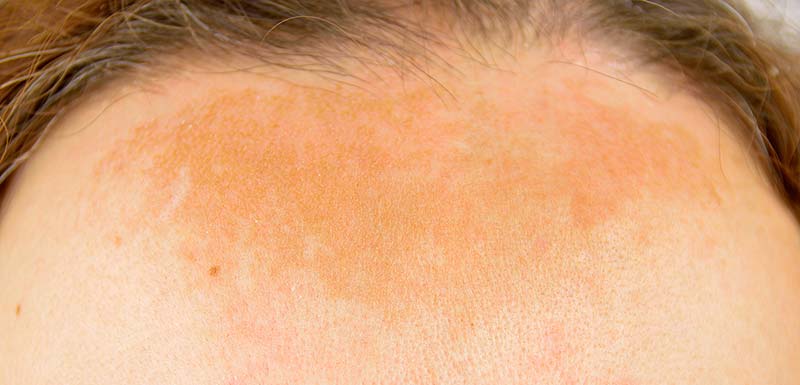
What is inflammaging?
Have you heard of inflammaging before? Inflammaging means chronic, low-grade (long-term, minor) inflammation that is associated with age-related changes in body tissues. Inflammaging has been linked to a number of age-related diseases including diabetes, inflammatory cardiovascular changes, age-related macular degeneration and skin aging. What’s most concerning about inflammaging is the difficulty in diagnosis of this issue at its early stages. All the more reason why an ounce of prevention can go a long way in protecting the aging of our skin and bodies and reducing the risk of chronic age-related conditions overall.
Intrinsic vs. Extrinsic Skin Changes
When it comes to skin aging, there are two types of aging-intrinsic and extrinsic skin changes. Intrinsic aging is accompanied by cell loss, thinning of the outer layer of skin, called the epidermis, and flattening of the area that joins the epidermis to tissue below its surface. This leads to the appearance of fine lines and wrinkles. Extrinsic aging is caused by external factors such as UV radiation from sun exposure, which causes inflammatory reactions in the skin, as well as oxidative damage. This oxidative stress injures cell membrane proteins and fats, and the genetic blueprint of the cell (DNA), which can increase skin cancer risk.
Another symptom of aging skin is age spots, which are hyper-pigmented lesions that can show up on the skin in areas of regular sun exposure such as the face, shoulders, backs of the hands and forearms. Age spots are associated with chronic low-grade oxidative stress on the pigment-forming cells within the skin, leading to many inflammatory and immune reactions in the cell, which causes tissue damage.

What can be done?
Essential fatty acids (EFAs) are fats that our bodies can’t create for themselves, and must be obtained through the diet. These include omega-6 and omega-3 fatty acids. EFAs are important for proper cellular membrane structure and function and can influence changes outside the cell, within the cell surface membrane, and inside the cell. They also happen to play an important role when it comes to your body’s natural inflammatory response. And depending on your EFA status, it can either promote or reduce inflammation within the body.
For example, too much of the omega-6 called arachidonic acid (AA) within the body, can lead to a higher chance of developing inflammation than a diet that contains a higher amount of omega-3 fatty acids.
AA is typically found in grain-fed beef, chicken, eggs, and pork. Soy, safflower and sesame oils are rich in the parent omega-6 called, linoleic acid (LA) which, although it does not significantly increase AA levels in the body, can contribute to inflammation if one’s omega-3 intake is too low. Interestingly, the omega-6, gamma-linolenic acid (GLA), which is found in borage oil and evening primrose oil, has anti-inflammatory effects in the body. GLA when combined with omega-3s, provides even greater anti-inflammatory effects than omega-3s on their own. Omega-3s, including eicosapentaenoic acid (EPA) and docosahexaenoic acid (DHA), are derived from grass-fed beef, fish and fish oils, omega-3 eggs and pork. Flaxseed and walnuts are rich in the omega-3, alpha-linolenic acid (ALA), which can be made into EPA and DHA within our bodies. Although only a small portion of the ALA we eat actually ends up as either EPA or DHA.

It’s important to note that omega-6 and omega-3 fatty acids are both essential and required in our bodies for optimal health. The goal is to aim for a 1:1 ratio of omega-6:omega-3 fatty acids in the diet, in order to reduce the likelihood of inflammation. When we achieve this ratio, our bodies are better able to resolve inflammation and reduce oxidative stress.
EFAs also play an important role in how our bodies translate our genetic make-up and form substances that control inflammation. For example, adequate intake of omega-3 fatty acids can help to reduce the production of substances that are known to promote inflammation. So even from a genetic perspective, omega-3’s can provide positive benefit when consumed regularly in the diet. In addition, exercise, getting enough sleep, managing stress in healthy ways and not smoking all contribute to minimizing levels of chronic inflammation in the body.
From a skincare perspective, when our skin becomes irritated, this triggers the release of agents that can cause inflammatory damage and destruction of the skin’s structural components including collagen and elastin, thereby contributing to wrinkle formation. EFAs reduce this inflammation. They also help maintain your skin’s barrier function to prevent water loss and protect your body from microorganisms that can cause infection and disease, control the growth of the structural components of the skin, increase the skin’s resistance to sunburn, and promote tissue repair. All this leads not only to enhanced skin function but also to a healthier appearance.
Consuming a healthful diet and supplementing with smart products can help reduce the risk of early-stage inflammatory tissue changes known as inflammaging. A few simple preventative changes can go a long way for the health of your skin.
You can start today by adding Renew + Protect to your daily routine.
Ponnampalam EN, Mann NJ, Sinclair AJ. Effect of feeding systems on omega-3 fatty acids, conjugated linoleic acid and trans fatty acids in Australian beef cuts: potential impact on human health. Asia Pac J Clin Nutr. 2006;15(1):21-9. PubMed PMID: 16500874 https://www.ncbi.nlm.nih.gov/pubmed/16500874
Zhuang, Y., & Lyga, J. (2014). Inflammaging in Skin and Other Tissues – The Roles of Complement System and Macrophage. Inflammation & Allergy Drug Targets, 13(3), 153–161. http://doi.org/10.2174/1871528113666140522112003
